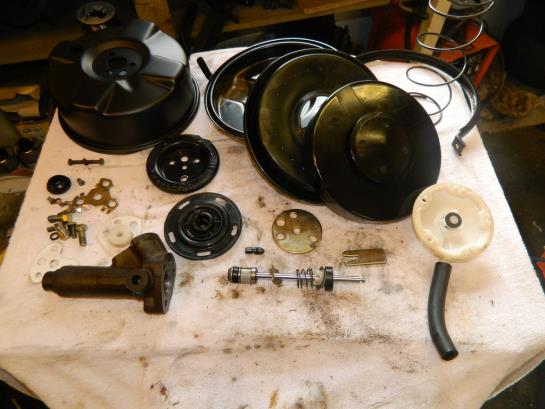Here are two very informative
sites about the process. Link

The casting 3232-656C is
correct for the (English AP) Lockheed servo fitted as original
equipment to the 1750 Berlina GT Veloce & Spider Veloce,
listed as January 1968 onwards.
Repair
kits for this type are still
on the market. Pls see www.powertrackbrakes.co.uk who
are very supportive. The rubber membram should say 3818-411 and
the main piston is 5/6 or 15.875mm. It is a good idea to get a
new air valve too and replace it at the same time.
Please scroll down to see the
step-by-step procedure.

Lockheed brake servo before dismantling

Air valve

Air valve cover removed (5 screws)

Membrane removed

Reaction piston retaining plate removed (3 screws).u

Removal of back cover, rubber bellow visible

Rubber bellow gently removed, securing clamp visible

When pressing down the return spring the clamp can be taken
out (should almost fall out)

Inside of the vacuum part, one way air valve visible

After removal of the housing (3 bolts), the backup guidchable

The parts in order of removal
This is what storage does to brake parts i

Slave cylinder and reaction piston
Shell removed to thoroughly clean the piston

I started rebuilding the servo because the brakes hanged on
for a few more secondse direct valve operation.
The dismantled air valve

The spring in place

All internal parts ready for reassembly

The reaction piston back in place

All components to be fitted again

Work in progress

Big return spring, plunger, bellow and back cover

Air valve and retaining ring
Reassembled

Reassembled hoping it will work...

The list of Remote Brake Servo's from Lockheed with their
sizes and revision kitsThanks































